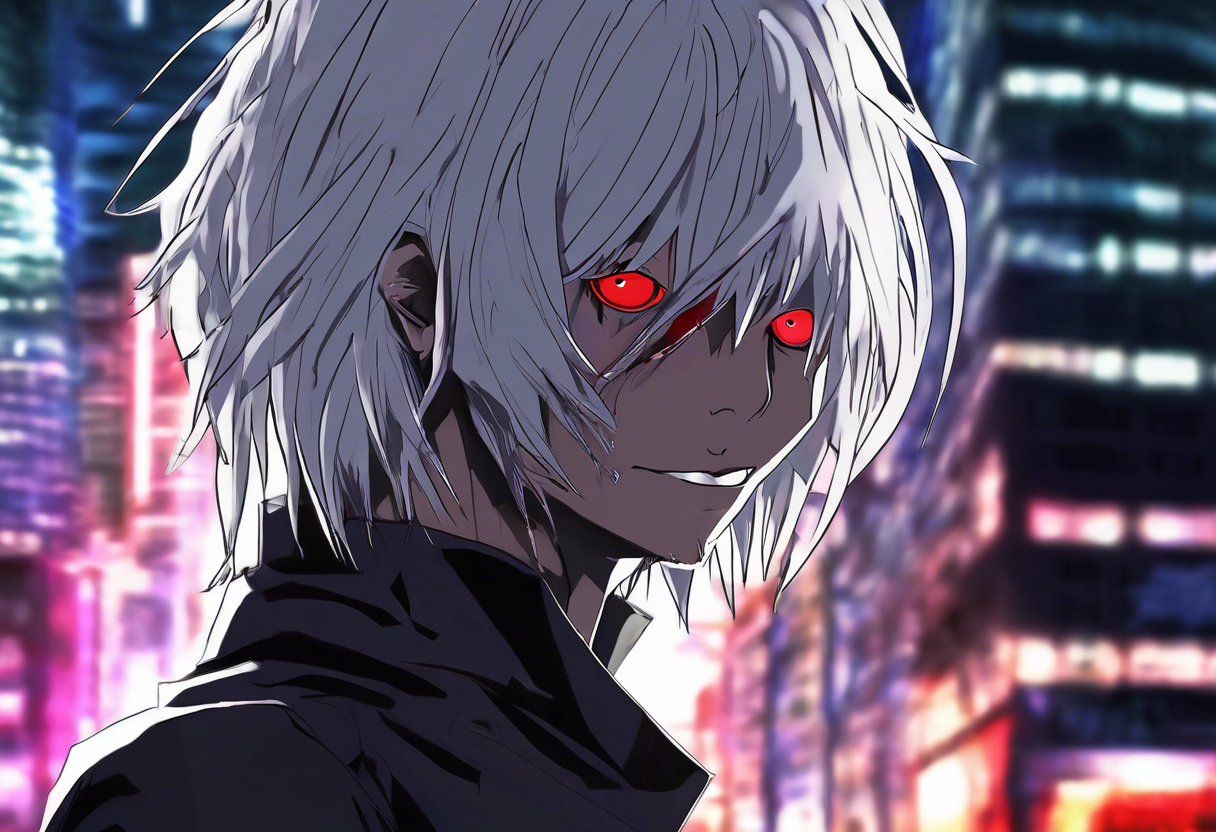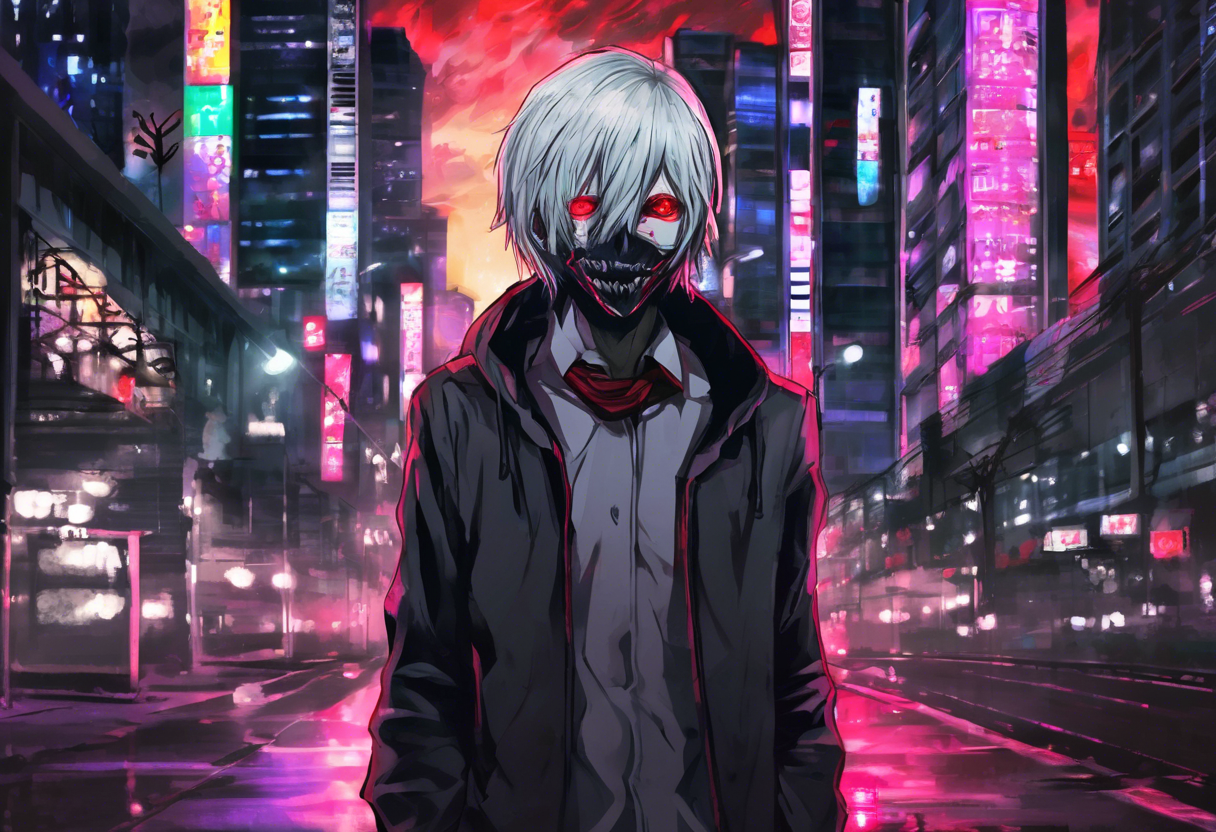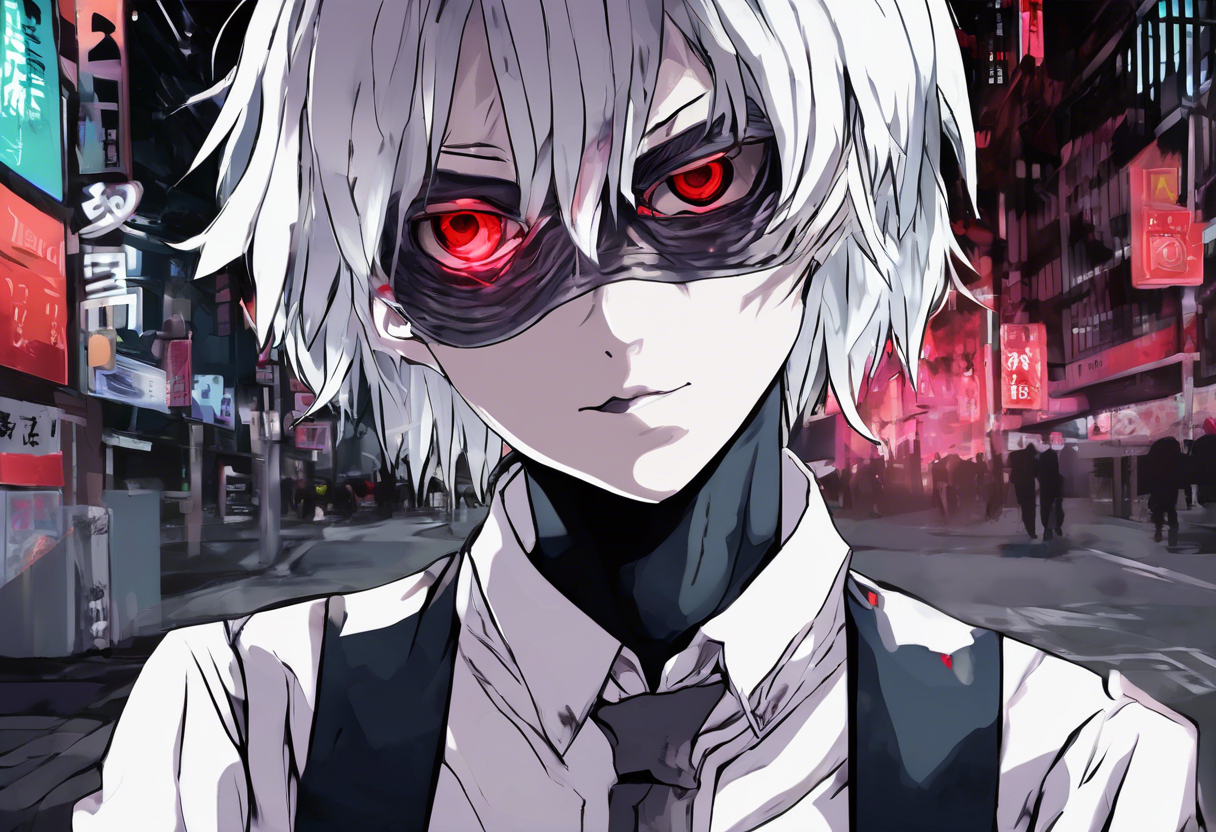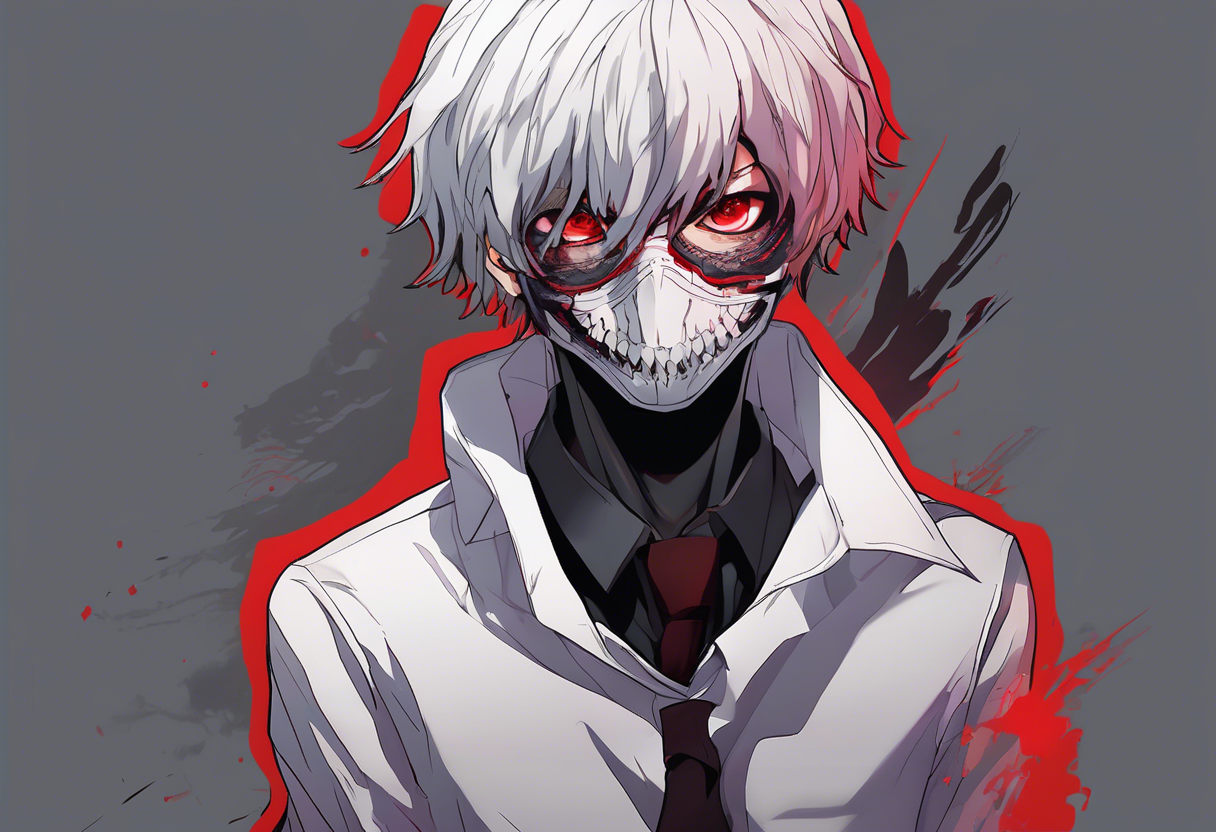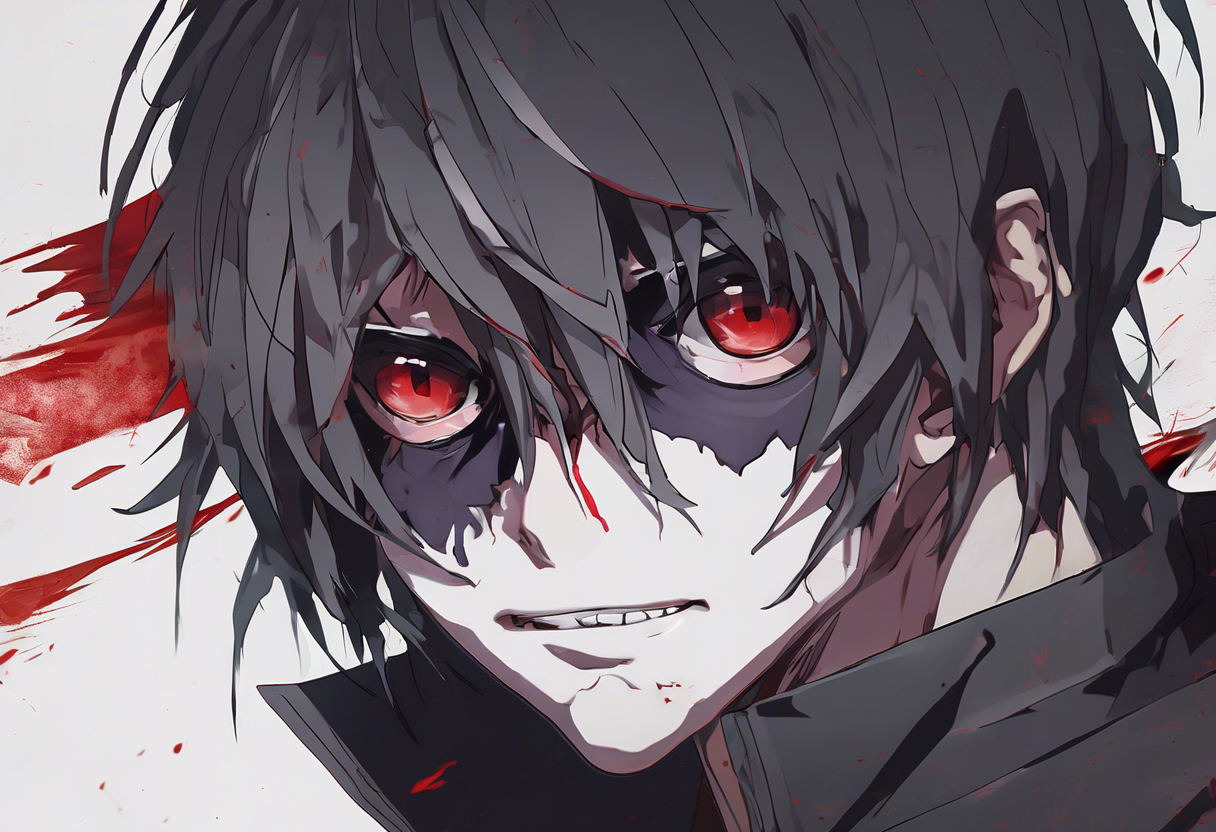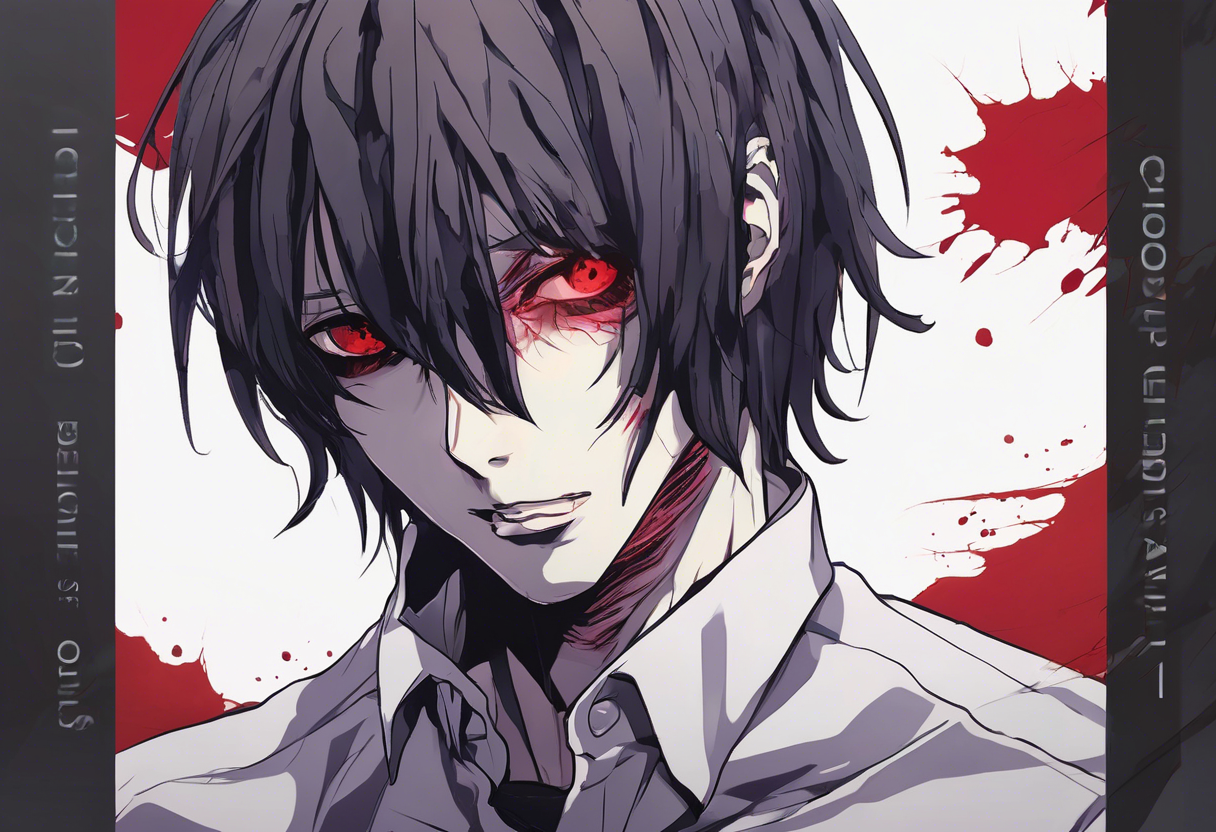Contents
Tokyo Ghoul – Episode 12: Ghoul
Introduction
Tokyo Ghoul – Episode 12: Ghoul, is the final episode of the first season of the anime series Tokyo Ghoul, based on the manga by Sui Ishida. The episode was directed by Shuhei Morita, written by Chūji Mikasano, and produced by Pierrot. It initially aired on September 18, 2014. This episode stands out within its genre for its intense exploration of identity, trauma, and the blurred lines between human and ghoul.
The production of this episode involved a meticulous approach to character development and narrative resolution, setting it apart from other anime series. The creative team’s focus on psychological depth and emotional resonance makes this episode a pivotal point in the series.
Plot Summary
Episode 12 delves deeply into the psychological and physical torment endured by Ken Kaneki, the protagonist, at the hands of Jason, a sadistic and powerful ghoul. The episode begins with Kaneki’s desperate attempt to maintain his sanity by counting backwards by sevens from one thousand, a method suggested by Yamori to cope with the excruciating pain and mental anguish inflicted by Jason’s torture[2][4].
As the episode progresses, it revisits the gruesome details of Jason’s torture, highlighting the profound impact on Kaneki’s mental state. Rize Kamishiro, a significant figure from Kaneki’s past, reappears in his visions, guiding him through the traumatic events of his childhood and the influence of his mother’s words: "It’s better to be hurt than to hurt others." This phrase resonates deeply with Kaneki, reflecting his internal conflict between his human and ghoul identities[4].
The torture intensifies, and Kaneki undergoes a remarkable transformation, both psychologically and physically. His hair turns completely white, symbolizing his acceptance of his ghoul nature and his rejection of the human identity he once clung to. This transformation is not just physical but also marks a significant shift in Kaneki’s self-perception and his place in the world[1][4].
Meanwhile, outside the Aogiri Tree headquarters, an all-out battle rages between the Commission of Counter Ghoul (CCG) and the Aogiri Tree. Members of Anteiku, a coffee shop that serves as a haven for ghouls, secretly join the battle. The chaos and violence escalate, setting the stage for the dramatic conclusion of the episode[4].
As the battle reaches its climax, Kaneki’s transformation becomes complete. He breaks free from his restraints and confronts Jason, symbolizing his newfound strength and acceptance of his ghoul identity. The episode concludes with Kaneki walking away from the devastated battlefield, carrying the lifeless body of his friend Hideyoshi Nagachika, amidst a backdrop of corpses and destruction. This poignant scene underscores the tragic consequences of the conflict and Kaneki’s newfound resolve[4][5].
Themes and Symbolism
Episode 12 of Tokyo Ghoul is rich in themes and symbolic elements that contribute significantly to its storytelling and emotional impact. One of the central themes is the exploration of identity, particularly the struggle between human and ghoul identities. Kaneki’s transformation serves as a metaphor for self-acceptance and the blurred lines between these two worlds. The white hair symbolizes his acceptance of his ghoul nature, marking a significant shift in his self-perception[1][4].
Another key theme is the impact of trauma and suffering. Kaneki’s experiences under Jason’s torture highlight the psychological and physical toll of such events. The episode delves into the emotional scars left by trauma and the ways in which individuals cope with and overcome such experiences. Rize’s reappearance and the flashbacks to Kaneki’s childhood emphasize the lasting effects of early life experiences on one’s sensibilities and worldview[4].
The phrase "it’s better to be hurt than to hurt others" is symbolic of Kaneki’s moral dilemma and his struggle to find a balance between his human compassion and his ghoul instincts. This theme resonates throughout the series, reflecting the broader narrative of ghouls living among humans and the ethical complexities that arise from such coexistence[4].
Cultural Impact
Tokyo Ghoul – Episode 12: Ghoul had a significant cultural impact upon its release. The episode’s intense and emotional conclusion resonated deeply with audiences, sparking discussions about identity, trauma, and the moral ambiguities presented in the series. The episode’s influence can be seen in various forms of media, including fan art, cosplay, and fan fiction, which often focus on Kaneki’s transformation and the themes explored in this episode.
The episode also contributed to the broader popularity of the Tokyo Ghoul series, which has since become a staple in anime culture. Its influence extends beyond the anime community, with references in other media and adaptations that reflect the series’ impact on popular culture.
Critical Reception
The critical reception of Tokyo Ghoul – Episode 12: Ghoul was largely positive. Critics praised the episode for its emotional depth, character development, and the impactful conclusion to the first season. The episode’s handling of themes such as trauma, identity, and self-acceptance was particularly lauded.
However, some critics noted that the pacing and resolution of certain plot threads could have been improved. Despite these minor criticisms, the episode was widely regarded as a powerful and emotionally resonant conclusion to the first season.
Legacy
Tokyo Ghoul – Episode 12: Ghoul continues to be a significant and influential episode in the world of anime. Its exploration of complex themes and its emotional impact have made it a benchmark for character-driven storytelling. The episode’s legacy can be seen in its continued relevance and influence on filmmakers, artists, and audiences.
The episode remains a pivotal moment in the Tokyo Ghoul series, setting the stage for the subsequent seasons and spin-offs. Its impact on anime culture is undeniable, and it continues to inspire new works and adaptations that explore similar themes of identity, trauma, and self-discovery.
References
- https://tokyoghoul.fandom.com/wiki/Episode_12
- https://otakubishounen.wordpress.com/2014/10/05/tokyo-ghoul-episode-12-ghoul-summary/
- https://www.animenewsnetwork.com/review/tokyo-ghoul/episode-12/.78927
- https://triptychalessandro.wordpress.com/2014/09/23/tokyo-ghoul-episode-12-review-ghoul/
- https://otakubishounen.wordpress.com/2015/03/28/tokyo-ghoul-%E2%88%9Aa-ep-12-ken-summary/

